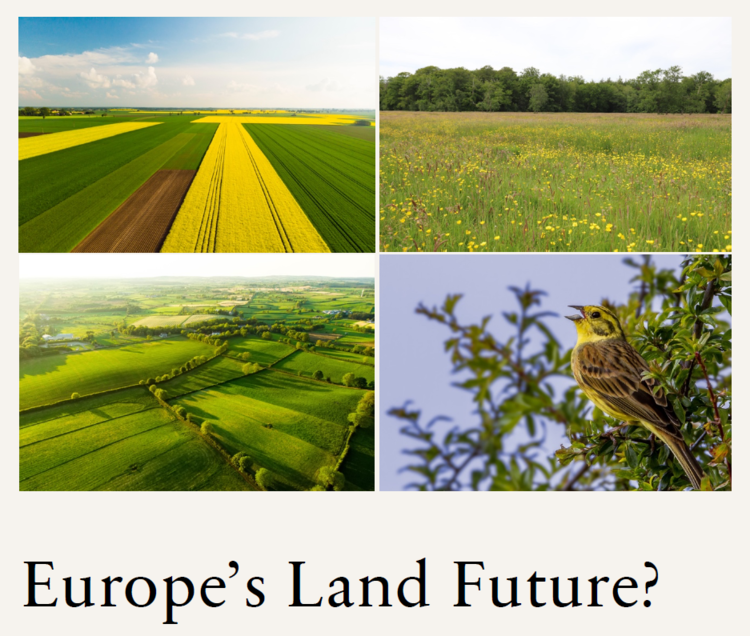Image

Europe's Land Future?
Publication Year
2022
Documents
Full text
Europe’s Land Future?
Highlights for Policy Makers
- Europe has high potential to reduce its land footprint, the land used to supply its agricultural products and wood. Europe’s land use and meat and milk consumption are already high, so likely declines in population and increases in crop yields by 2050 can reduce this land footprint.
- This decline has a critical climate role. Even in future baseline projections, climate models estimate that reductions in Europe’s footprint (from 10 to 50 million hectares) offset some expansion of agricultural land globally. That holds down net global deforestation, still often estimated at hundreds of millions of hectares. Most climate strategies require stable or reduced global agricultural area to preserve forests, savannas, and their carbon. To succeed, they require more progress everywhere, including larger than baseline reductions in Europe’s footprint.
- Net global cropland expansion has likely increased to 12 million hectares per year in the last eight years studied. By 2050, conversion at this rate would reduce forests and savannas by an area the size of India.
- Europe’s agricultural footprint includes 24 million hectares of foreign land used to supply net agricultural imports, which contributes to global deforestation. We estimate Europe’s land “outsourcing” causes a loss of 400 million tons of CO2 per year. These losses roughly cancel out Europe’s forest carbon sink.
- By reasonably increasing crop yields and reducing biofuels to 2010 levels, Europe can simultaneously eliminate its global outsourcing and reduce its own cropland by 16.5 million hectares (~16% of cropland). Moderate reductions in milk and meat consumption could push the reduction to 30 million hectares. Spared land could be used to restore more carbon and biodiversity in Europe and/or save forests abroad.
- Although Fit for 55 goals include restoring more carbon and biodiversity in Europe, bioenergy provisions would leave little or no land to do so or to reverse outsourcing. Commission modeling estimates Europe will import more wood for energy and devote 22 million hectares to energy crops by 2050, roughly equal to 1/5 of Europe’s cropland. Modeling also foresees a loss of 10 million hectares of biologically diverse, semi-natural grasslands.
- Expanded biomass use primarily results from the plan’s false treatment of biomass as “carbon neutral.” Carbon neutral means that emissions of CO2 from the burning of wood or biofuels are ignored. As a result, power plants, households, aviation, and shipping have perverse incentives to burn biomass.
- Carbon neutral rules treat land as having no carbon opportunity cost. As a result, the Fit for 55 plan encourages more bioenergy regardless of how much it reduces land available to restore forests and carbon in Europe or how much it increases deforestation abroad by increasing Europe’s foreign land footprint.
- Improved LULUCF requirements in Fit for 55 could encourage Member States to reduce wood harvests but would not fundamentally alter the incentives felt by energy users to burn biomass. The more Member States place a “foot on the brake” in the supply of their own biomass, the more the “food on the pedal” provided by bioenergy rules will accelerate use of land overseas via increased imports of wood, biofuels, or biomass. Likewise, if Europe dedicates more European cropland to energy crops, Europe will import more food and feed.
- The EU’s Forest Strategy for 2030 explicitly acknowledges that increased wood harvest for bioenergy or other wood products will increase global warming for decades.
- The EU can fix Fit for 55 by factoring the carbon opportunity cost of land into its climate calculations for bioenergy. It can also adopt goals to reduce its land footprint, including explicit goals to reverse its outsourcing, and strengthen policies to increase crop yields and to reduce demand for meat, milk, and wood.
Publication type

